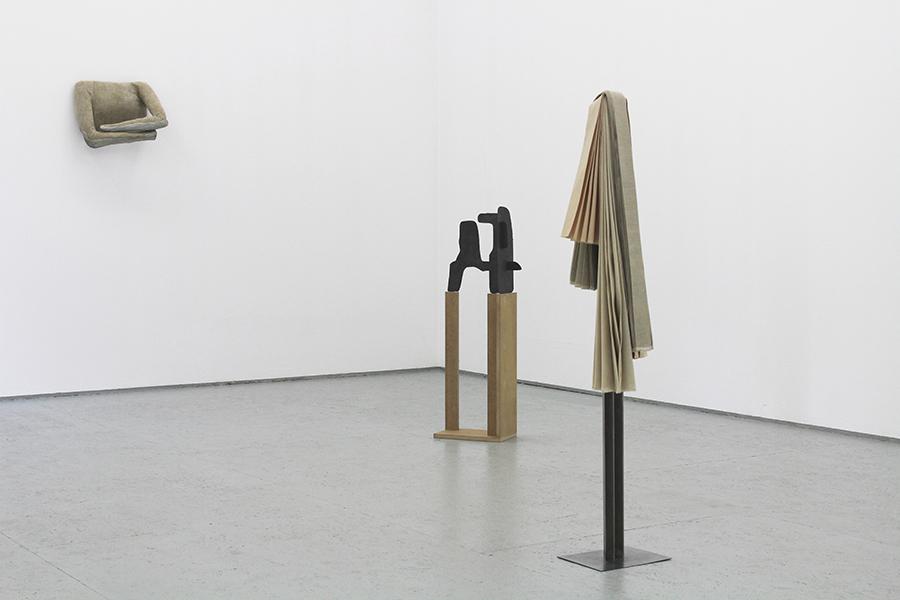Gizela Mickiewicz's Homage to Romanian Writer Max Blecher
The artist's exhibitions at galeria stereo pays tribute to Blecher's ferible dream diary The Lit-Up Burrow
The artist's exhibitions at galeria stereo pays tribute to Blecher's ferible dream diary The Lit-Up Burrow

Bed-ridden for most of his short life in various sanatoriums, Max Blecher, who died in 1938 at the age of just 28, was a Romanian medical student who came to be remembered as one of the most extraordinary writers of 20th-century Central European literature. In Iulian Coman Baicus’s essay ‘Max Blecher, The Harlequin and the Nothingness’ (2012), the author states that Blecher had taken up writing because he didn’t consider himself good enough at knitting and wanted to spend his time doing something useful. At the age of 19, Blecher was diagnosed with spinal tuberculosis, a virtually incurable illness at the time, which confined many patients to a plaster-cast armour, since sudden movement could bring excruciating pain. ‘Internal Lighting’, Warsaw-based artist Gizela Mickiewicz’s recent exhibition at Galeria Stereo, is deeply inspired by Blecher’s The Lit-Up Burrow: Sanatorium Journal, published posthumously in 1947. The book is a febrile dream diary chronicling the gradual decline of the author’s health, as he makes his way from one institution to another, the identity crisis that besets him and the refusal of his fellow patients to accept the same inevitable fate.

In the novel, returning to his hometown following time away to undergo surgery, Blecher observes: ‘There was now an elementary simplicity of objects, as if they were only sketched and put in their place, no history, no memory […] It was a new substance of reality from which the town was now built and myself in the middle of it, new, fresh, without weight and without organs, as a simple line of my own contour.’ In ‘Internal Lighting’, Mickiewicz’s sculptural works conjure a similar aura and appear like phantoms of objects that no longer serve their original purpose. Mobile Habits (all works 2020), for instance, initially seems to be an abstract, grey-steel sculpture perched on a fibreboard support; its plinth, however, is revealed to be intrinsic to the object. Direction of Indecision is the artist’s take on the Möbius strip – a white tangled ribbon of pulped paper held together by a meshed structure that makes it impossible to tell its beginning from its end.

Mickiewicz’s works testify to a peculiar form of identity crisis: not only do they disavow the connection to the objects they seemingly reference, they also defy the properties of the materials they employ. What they bring to light, instead, is the disintegration of their selves – as attested to by their titles. The black and grey Maturation of Postponed Intentions resembles a fragment of bleached coral reef or a three-dimensional map of snow-covered arctic terrain that folds in upon itself. Future of Decreasing Differences seems to act as the former work’s vertical counterpart: several layers of painstakingly folded textiles, as if stuck on a long steel pole, recall sheets of packing paper. Falling Upright is among the rare instances where Mickewicz deploys an anthropomorphic form: two conjoined concrete human feet – one resting flat on the floor, the other perpendicular – echo the position of those of an athlete preparing to sprint out of the blocks. The rest of the body is missing: what would have been the lower limbs are encased in soft duvet fabric.

In ‘Internal Lighting’ the ambiguous bodies of the sculptures not only personify evanescent emotional states, they also communicate them. Mickiewicz aims for the sculptures to evoke the same state in the viewers as expressed through the form and titles of her works. Her sculptures are ‘reimagined objects’ illuminated with the artist’s own beguiling light. The contrast between their elusive, poetic titles and the concreteness of their material is drawn to the fore to highlight, as Blecher put it, ‘a new substance of reality’.
Main image: Gisela Mickiewicz, ‘Internal Lighting’, 2020, exhibition view. Courtesy: the artist and galeria stereo, Warsaw
























